
What’s in a name? Specifically, a vessel named Monitor? Anyone familiar with The Mariners’ Museum knows about the Civil War battle between the Union’s Monitor and the Confederate Merrimac. We have a permanent exhibition centered on this critical battle. In addition, the Museum employs a team of conservators to preserve Monitor’s turret. I believe the ironclad was the first ship by this name.
This post will present several different Monitors from our photographic and object collections: a warship, a tugboat, a sidewheel steamer, a schooner, a World War II vessel, and a hydroplane.
Ironclad Monitor was America’s first true ironclad. Designer John Ericsson’s radical new design for Monitor incorporated steam powered screw propulsion, iron hull, large caliber guns and iron armor, that had previously not been combined in one ship. “Naval historian Philip Ludeberg has noted that the most significant aspect of Monitor’s design was that she was ‘the world’s first turreted ironclad…[which]…more than Monitor’s low-freeboard draft and tapered lower hull, was the most distinctive element of this novel weapons system…’” [1]
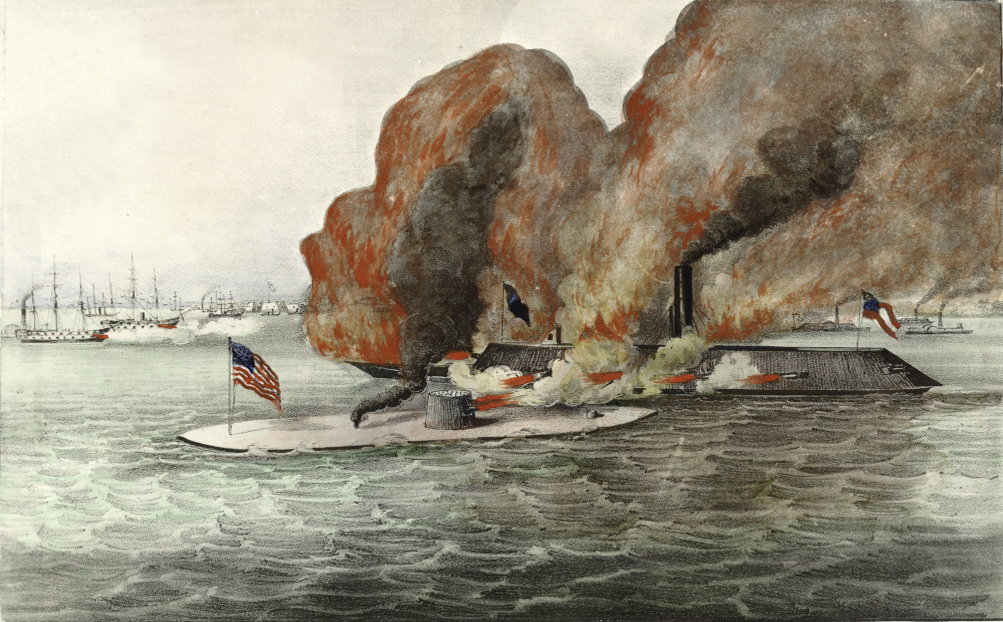
The March 1862 engagement between Monitor and Merrimac ended without a clear winner. Both ships suffered damage, but considerably less than their wooden counterparts would have. The first ever battle between two ironclad ships not only signaled the end of wooden fleets, but it also captured attention around the world.
Monitor was widely perceived as “the ship that saved the Union” during the Civil War. The presence of CSS Virginia in waters close to Washington, DC and her potential destruction of the Federal fleet at Hampton Roads inspired hysteria and some panic. The arrival of Monitor at Hampton Roads and her battle with Virginia [Merrimac] ended the Confederate ironclad’s destructive foray among the Union’s wooden fleet and provoked a flurry of pro-Monitor sentiment that persisted long after the last shots of the Civil War had been fired.
The tremendous positive public response to Monitor and her combat with CSS Virginia in the United States inspired a “Monitor craze.” Monitor reinforced the popular concept among Americans that they were technologically superior and ingenious. [1] This helps place us within the time frame of post-Civil War America and acknowledges the significance behind the future naming of vessels.
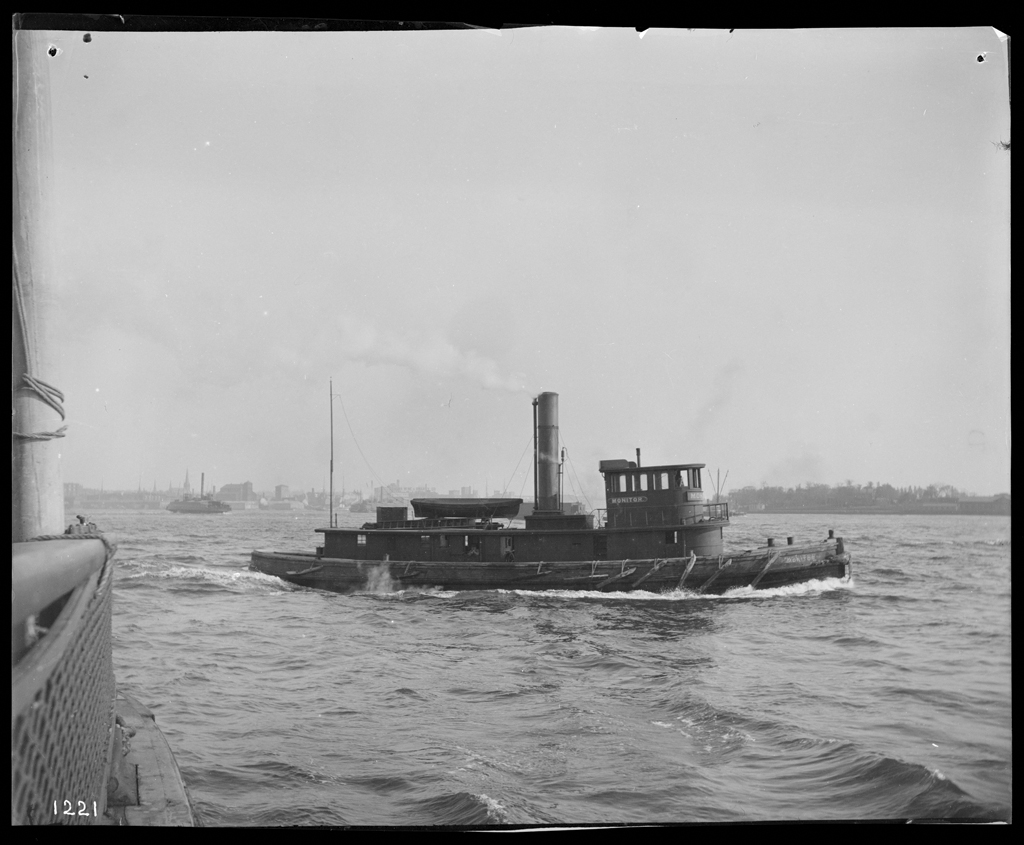
Tugboat Monitor was built in 1862 for the US Army Quartermaster. Tugboats such as this would typically transport supplies and troops along waterways and help maneuver lager ships into ports. [2]
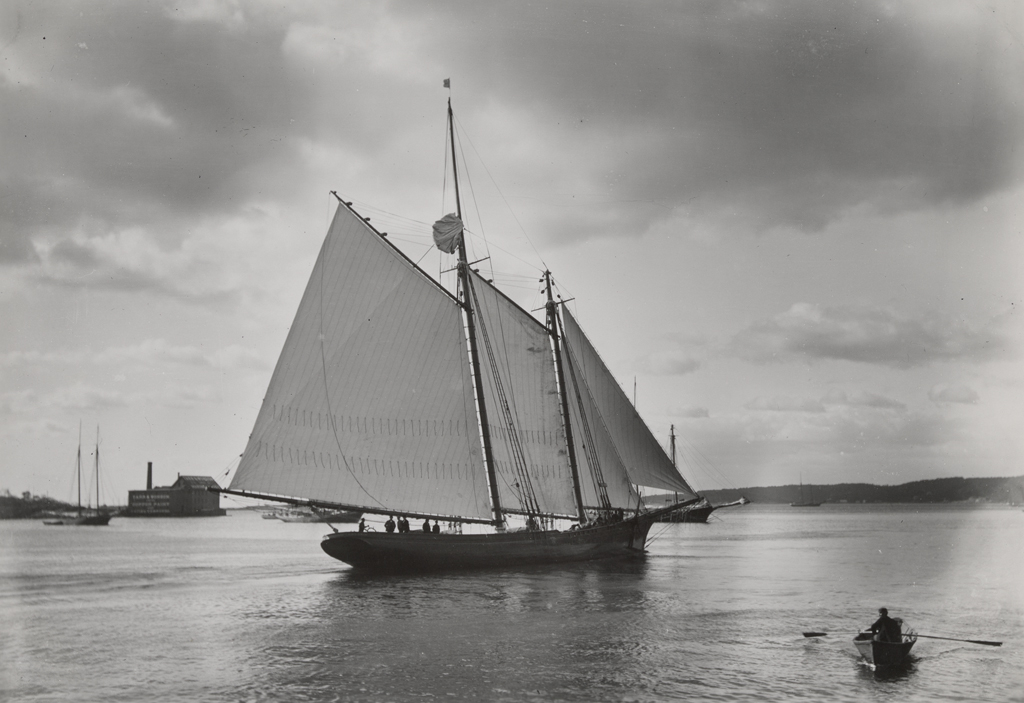
This serene photograph of schooner Monitor was taken by Gordon Thomas. Built in 1901, it was sunk by a German submarine on April 25, 1917, while on a voyage from Italy to Cadiz, Spain, to load salt for Newfoundland.
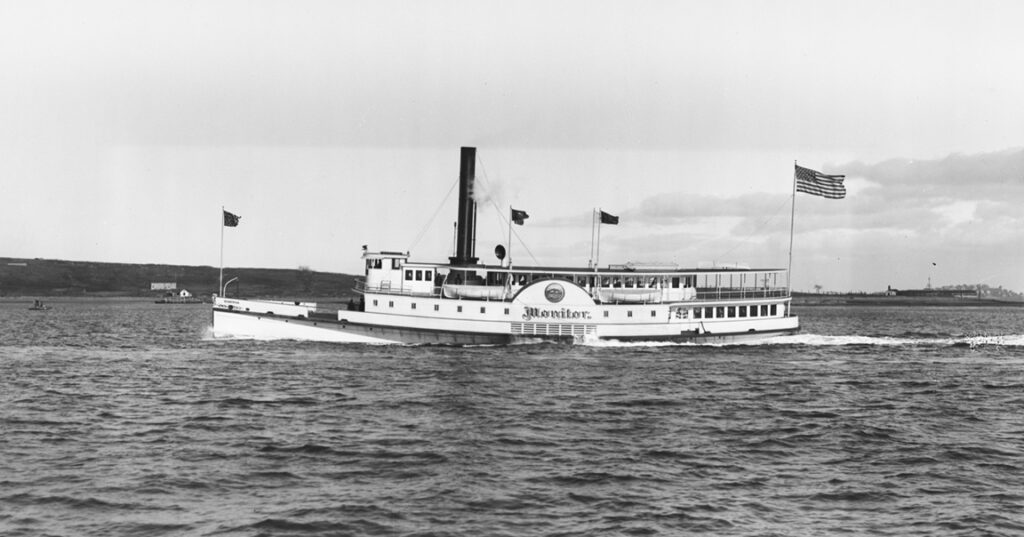
Side-wheel steamer Monitor, launched in 1904, was owned by the City of Boston.
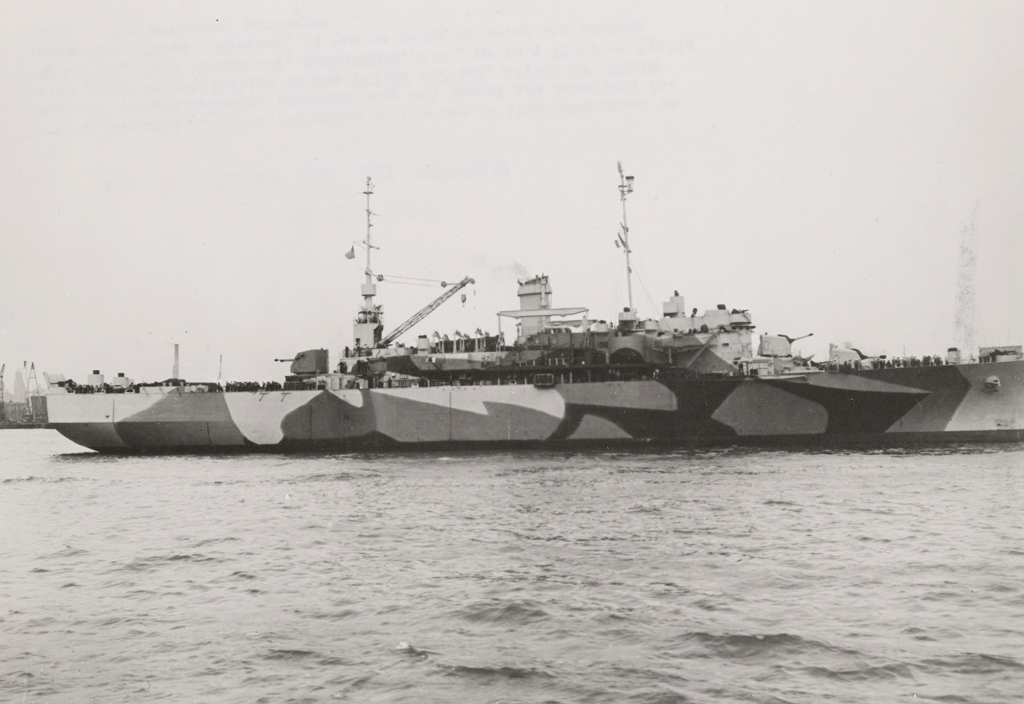
USS Monitor LSV-5 (landing ship vehicle) was built as a net layer, recommissioned as an LSV-5 in 1944. During World War II, it was assigned to the Asiatic-Pacific Theater and is seen here in dazzle paint.

In the 1870s, Allen Baker was certainly under the spell of the “Monitor craze.” He transformed the design of Monitor’s turret into a rotary windmill. Baker Manufacturing Company’s “Monitor” windmill was an immediate success. The company operated a foundry and machine shop as well as a woodshop, and, along with two designers, it expanded their product line to include iron pumps and other iron goods. Throughout their 100+ years in business, Baker Manufacturing continued to innovate, offering a wide variety of new products while improving upon existing ones.
…but back to the vessel named Monitor.
In the early 1950s, J. Gordon Baker, now president, and his staff turned their attention to experiments with hydrofoils. Their first hydrofoil boats were introduced at the National Boat Show in Chicago in 1953. At the time, they were selling kits that could add hydrofoils to an existing vessel. By 1955, Baker Manufacturing’s research team “developed ‘The Monitor,’ designed as the world’s fastest sailboat, using the hydrofoil designs applied to earlier motor boat tests.” [3]
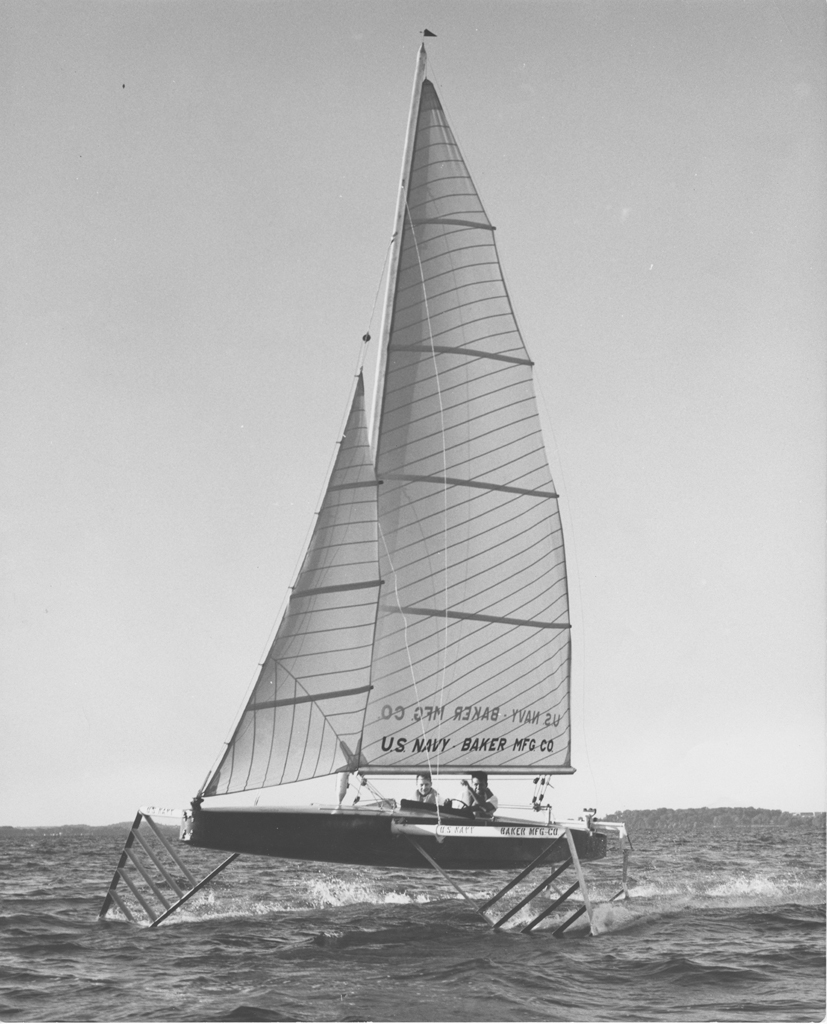
Hydrofoil Monitor was one of the world’s first successful hydrofoil-stabilized sailboats, having set a speed record in 1955 of over 30 mph on Lake Mendota, Wisconsin. It was part of a successful scientific research program on hydrofoils sponsored by the Office of Naval Research. Monitor was donated to the Museum in 1979. ─Lyles Forbes, vice president of collections and chief curator.
Hydrofoils were uncommon in the 1950s. This is a statement from Baker Manufacturing’s collection on what they are and how they work.
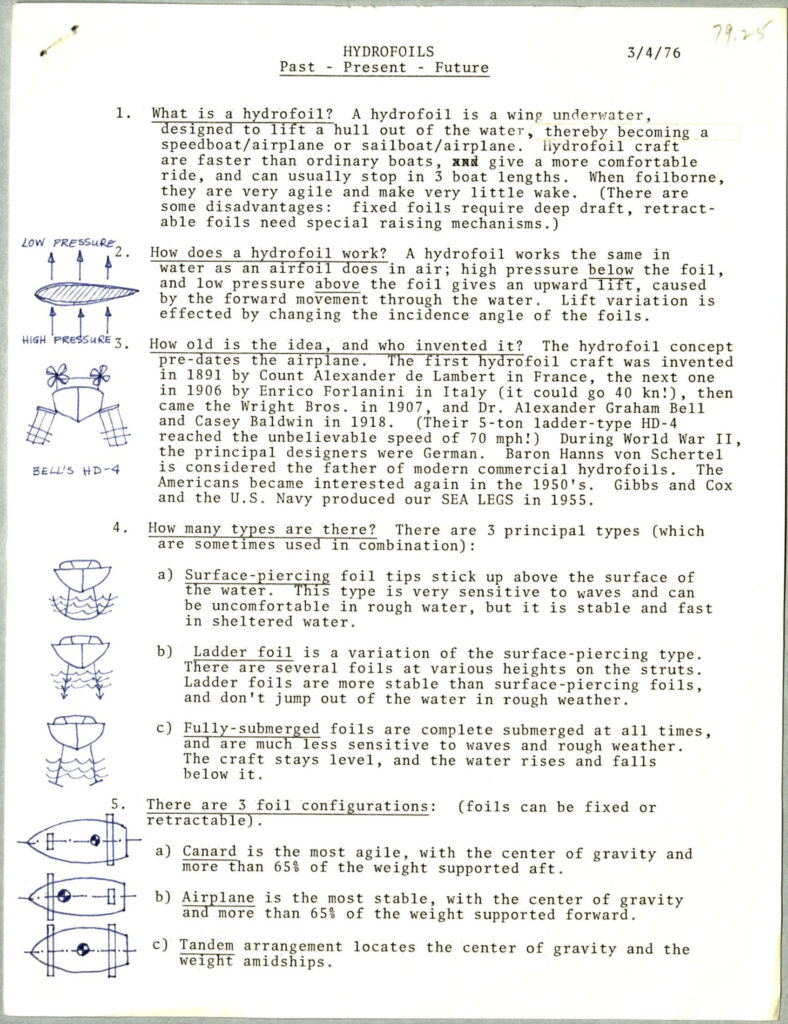
Just as we might select a name for our children or pets, the name given to a ship would likely have been chosen with careful consideration, whether it be nostalgia (Annie C. Ross, Daisy) or intent (Discovery, Warrior). For many, the name Monitor represented unwavering strength and innovation.
Sources:
- “A Symbol of American Ingenuity:” Assessing the Significance of U.S.S. Monitor. Historical Context Study for the Civil War Ironclad Warship U.S.S. Monitor. Accessed March 5, 2025. https://npshistory.com/publications/maritime/hcs-uss-monitor.pdf
- “The Quartermaster Review – September-October 1928.” Accessed April 1, 2025. https://www.quartermasterfoundation.org/the-quartermasters-department-1861-1864/
- “History of Baker Manufacturing Company,” written in 1998 for the 125th anniversary of the company, by Ruth Ann Montgomery. Accessed March 17, 2025. https://evansvillehistory.net/files/bakermanuf2.pdf